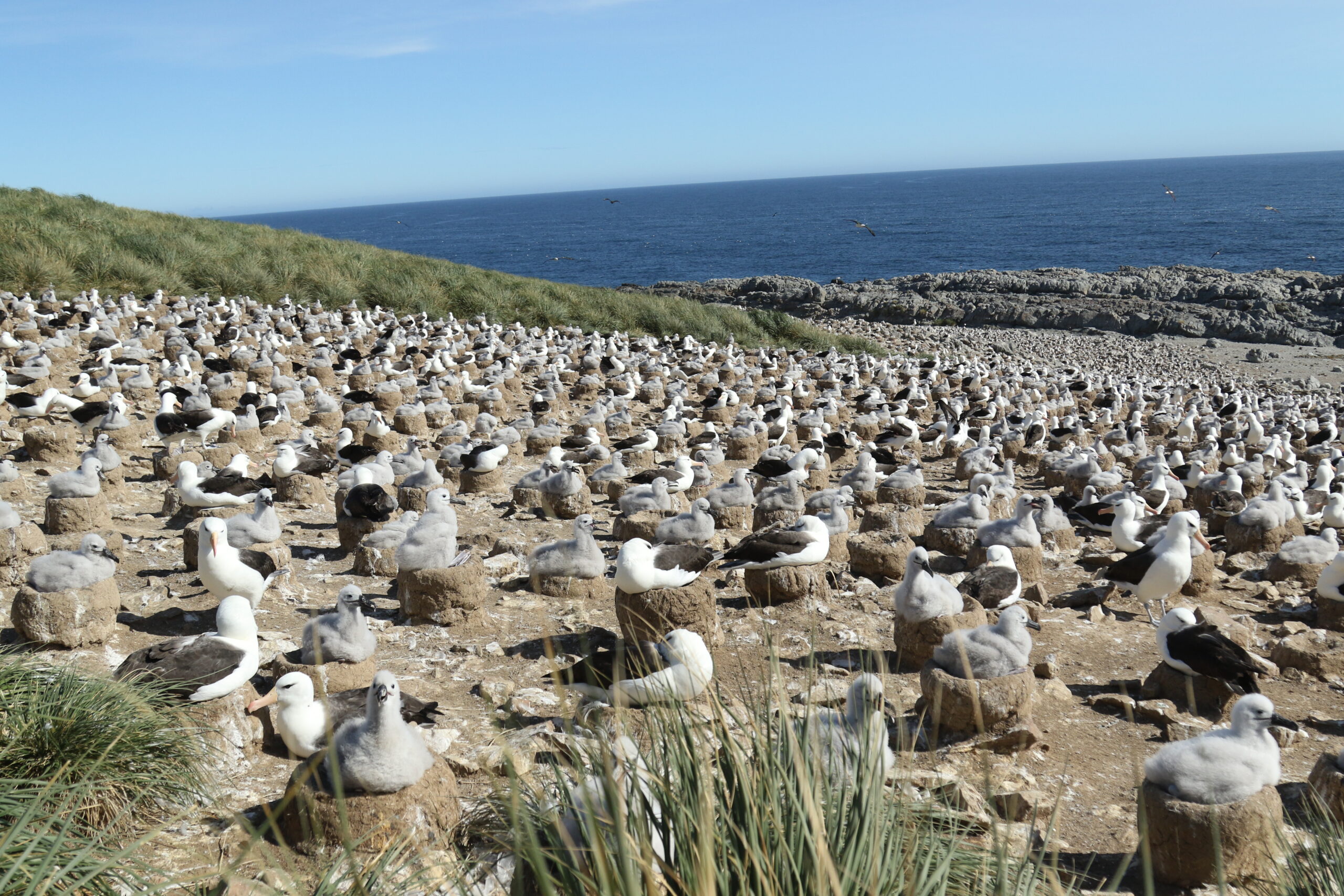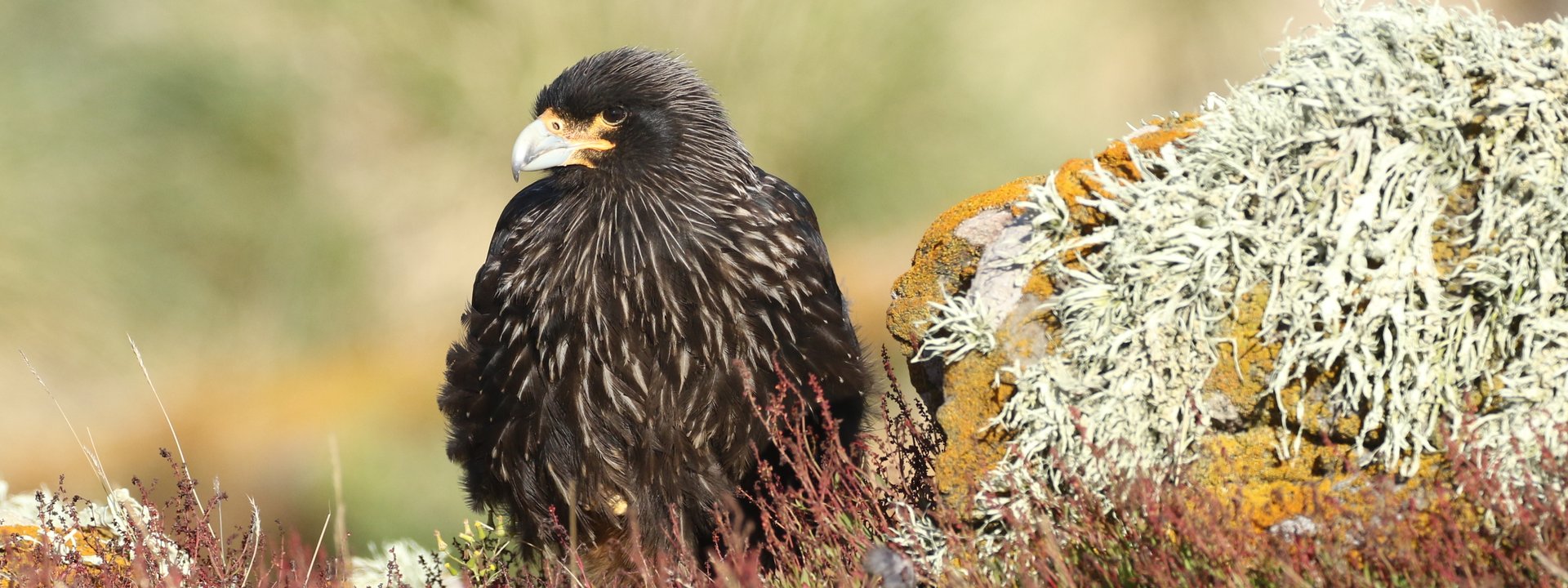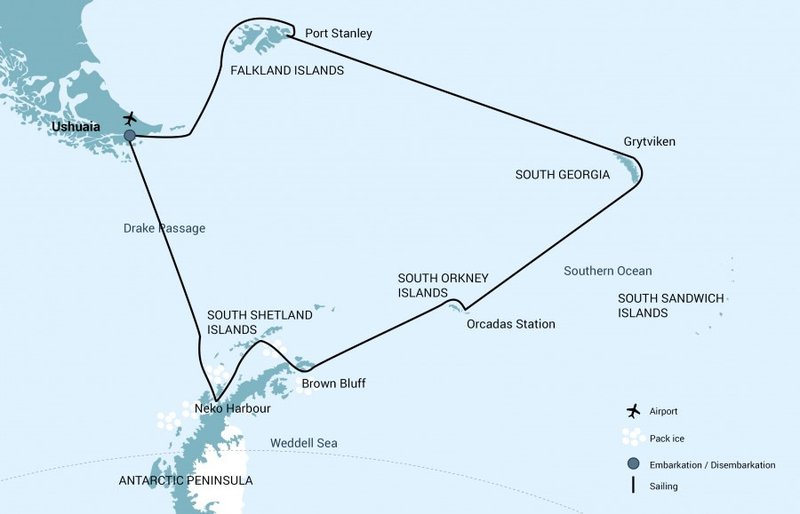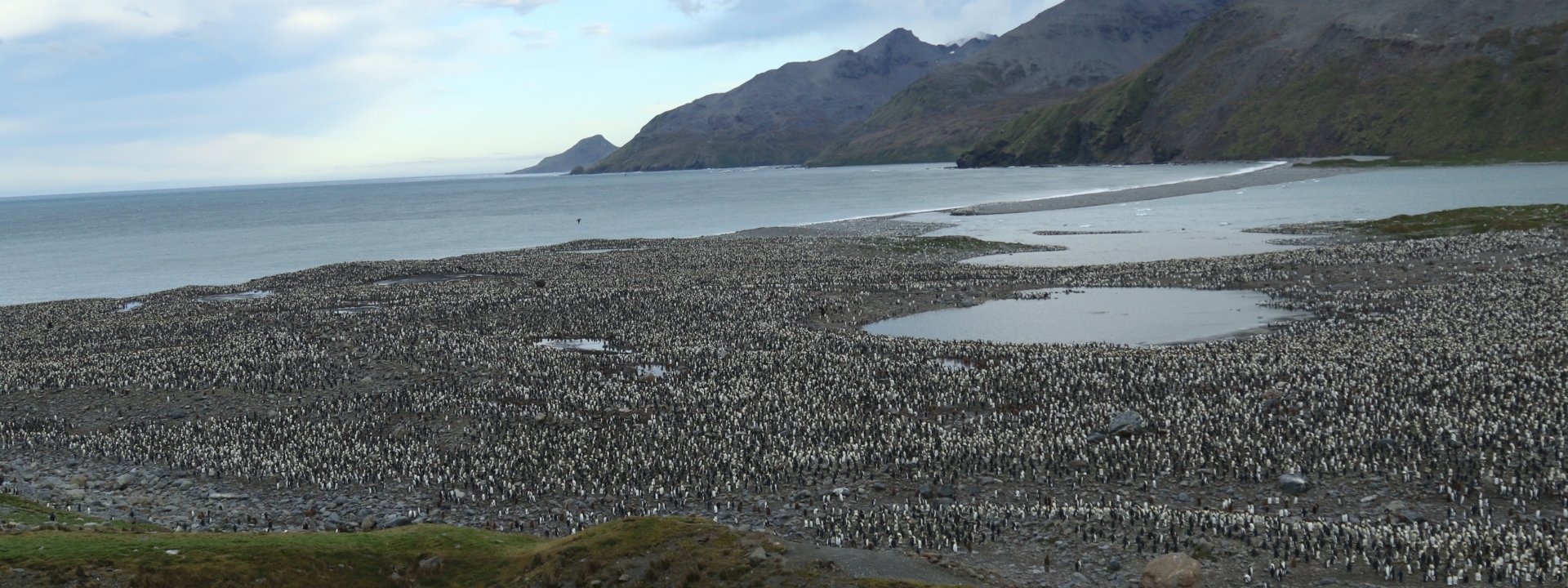Antarctica
Antarctica, Falklands & South Georgia (Ship: m/v Hondius)
Falklands and South Georgia as well as Antarctica is an incredible experience as it combines the majesty of the snow and ice with two very different subantarctic islands.
A cruise to the Falkland Islands, South Georgia and Antarctic Peninsula is an incredible and truly life-changing experience combining the “Great White Continent” with two very different but equally amazing subantarctic islands.
WildWings has been working with Oceanwide Expeditions for many years and have assisted many clients in experiencing the wonders of this region on their ships.
Tour Dates & Prices
Sat 1st February 2025
Thu 20th February 2025
- Phone Us to Book
Tour Cost: 20 Days from £13650 * excluding flights
* The price quoted above is per person for the most basic cabin.
What's Included?
- All meals throughout the voyage aboard the ship including snacks, coffee and tea.
- All shore excursions and activities throughout the voyage by zodiac.
- Programme of lectures by noted naturalists and leadership by experienced expedition staff.
- Free use of rubber boots.
- Luggage transfer from pick-up point to the vessel on the day of embarkation in Ushuaia.
- Pre-scheduled group transfer from the vessel to the airport in Ushuaia (directly after disembarkation).
- All miscellaneous service taxes and port charges throughout the programme.
- Comprehensive pre-departure material.
Cost Excludes
Any airfare, whether on scheduled or charter flights. Pre- and post-land arrangements. Passport and visa expenses. Government arrival and departure taxes. Meals ashore. Baggage, cancellation and personal insurance (which is strongly recommended). Excess baggage charges and all items of a personal nature such as laundry, bar, beverage charges and telecommunication charges. The customary gratuity at the end of the voyages for stewards and other service personnel aboard (guidelines will be provided).
Tour Highlights
- explore the subantarctic islands of the Falklands and South Georgia
- travel through the Drake Passage
- expect to see Wandering, Northern Royal, Southern Royal, Black-browed, Grey-headed and Light-mantled Sooty Albatrosses amongst others
Outline Itinerary
-
Embark in Ushuaia and sail
-
At sea
-
Falkland Islands
-
Port Stanley, capital of the Falklands
-
At sea
-
South Georgia
-
At sea and southward bound
-
The South Orkney Islands
-
At sea and last push to Antarctica
-
Awe-inspiring Antarctica
-
Drake Passage
-
Ushuaia

For those who can justify the time, a trip that goes to the Falklands and South Georgia as well as Antarctica is an incredible experience as it combines the majesty of the snow and ice of the ‘Great White Continent’ with two very different but equally amazing subantarctic islands.
Indeed, for anyone keen on birds and wildlife, WildWings would rate these islands as more interesting for their natural history than the Antarctic Peninsula. With the possibility of seeing breeding albatrosses on the Falklands and vast King Penguin colonies at South Georgia, these are experiences you will not find further South and both are as awe inspiring as the penguins, ice and snow of the Peninsula.
Generally, the season for visiting this region begins in late October and runs until March and every month has its own special highlights. It is simply impossible to say that one period is better than another – the experiences are just different.
Early in the season, the albatrosses will have started nesting on the Falkland Islands but the King Penguins will have plenty of fully grown chicks on South Georgia, whilst the Gentoo and Adelie Penguins of the Peninsula will also have only just begun egg laying. At this time of year, you are unlikely to see so many Humpback Whales in Antarctica as the numbers increase throughout the southern summer; indeed, these actually peaking after most of the expedition ships have ended their trips for the season.
By February, many of the penguins will have finished breeding in the Falklands, the chicks in the South Shetland Islands and Peninsula will be large but there will be fewer Southern Elephant and Antarctic Fur Seals in South Georgia.
As the exact itineraries are only determined a few months before each expedition and will also change on a day-to-day basis depending on the prevailing weather, it is impossible to be precise where you will be visiting in advance. The trips we recommend, however, will spend at least a day or two in the Falklands and then a minimum of three or four days in South Georgia.
Whilst it is usually possible to find shelter (to get ashore) in the Falklands, many of the best landing sites for wildlife on South Georgia are exposed so we believe going on a trip which spends as long as possible here will give you the best experience and a higher chance of visiting some of the truly magical highlights of this special island.
On the Falkland, possible landing sites include West Point Island where there is mixed colony of Black-browed Albatrosses and Rockhopper Penguins, Grave Cove where you could see Commerson’s Dolphins and Gentoo and Magellanic Penguins and Carcass Island which one of the few islands where Cobb’s Wren still survives.
When visiting South Georgia, all vessels are required to make a stop at Grytviken where ship clearance takes place but there is an amazing museum and the grave of Ernest Shackleton to visit along with Southern Elephant Seals, Antarctic Fur Seals and small numbers of King Penguins. The most impressive penguin colonies are arguably at Salisbury Plain and St Andrew’s Bay but there are plenty of other beaches which are also very special such as Gold Harbour and Stromness. Following the recent successful rat and mouse eradication project, the number of sites where one can find the endemic South Georgia Pintail and South Georgia Pipit have increased significantly so there are now good chances of finding both these species on your visit which was certainly far from guaranteed just a few years ago.
The transits between the Falklands and South Georgia and from there onwards to Antarctica (plus, of course, the Drake Passage when heading back to South America) provides a fantastic opportunity to see many species which you will not encounter around the islands or Antarctic Peninsula.
Although the Southern Ocean is notorious for the swells, storms and inclement sea conditions, in reality, you will be unfortunate to encounter really bad weather and your time at sea provides a fantastic opportunity to look for a great variety of seabirds. Wandering, Northern Royal, Southern Royal, Black-browed, Grey-headed and Light-mantled Sooty Albatrosses are all possible, along with both Giant Petrels, Southern Fulmar, Cape, (Lesser) Snow, Soft-plumaged, Blue and White-chinned Petrels. Amongst the smaller species, both Wilson’s and Black-bellied Storm-petrels are regular, as are Antarctic, Slender-billed and Fairy Prions, and with perseverance and a degree of luck you could see something less common such as Sooty Albatross, Kerguelen Petrel, Great Shearwater or even an Emperor Penguin.
Whilst you are cruising close to land, Humpback and Antarctic Minke Whales as well as Orca (Killer Whales) are generally the most likely cetaceans, but a much wider variety of species are present out in the deeper water. Once again, it is a case of being out on deck, ‘putting in the hours’ and hoping that luck is on your side but Blue, Fin, Southern Right and Sperm Whales are all possible, as are smaller species such as Arnoux’s and Strap-toothed Beaked Whales and Hourglass Dolphin. Indeed, we strongly recommend always having a camera to hand as photos are often the best way of identifying the trickier species.
It is almost impossible to put into words, the breath-taking scenery of Antarctica and even the most harden birder will find it an incredible experience. Ice and snow will be a constant feature as your ship cruises between landing sites and on most occasions, you can expect two activities each day with these being a combination of landings and zodiac cruises.
Whilst every voyage is unique, most trips will offer you the opportunity to visit colonies of Chinstrap, Adelie and Gentoo Penguins. There are also excellent chances of Weddell and Crabeater Seals and as the days start to shorten, the chances of finding Leopard and Antarctic Fur Seals generally increases. Almost irrespective of when you visit, you can expect to see Humpback Whales (with the highest numbers being at the end of the summer) and whilst wildlife can never be guaranteed, there are also opportunities to see Orca (Killer Whales) throughout the summer months.
As well as visiting the Antarctic Peninsula, most expeditions also make landings in the South Shetland Islands which have a slightly milder climate. For birders, a stop here is important to see Chinstrap Penguins as these are much less numerous around the Antarctic Peninsula itself and are only found at a handful of sites in South Georgia. The South Shetlands are also where some of the most popular landings are located with one of these being Deception Island, a volcano with an extraordinary flooded caldera which the expedition ships are able to sail inside.
With excellent birding on the outskirts of Ushuaia at both the Tierra del Fuego National Park and around the Martial Glacier which overlooks the town, we recommend allowing time before your voyage to visit these stunning locations. Local specialities including Magellanic Woodpecker, White-throated Caracara and Magellanic Horned Owl can be found at the national park and the scree slopes and woodlands around the glacier offer chances for White-bellied Seedsnipe, as well as Thorn-tailed Rayadito, Austral Thrush and Andean Condor.
WildWings have been assisting clients in visiting Antarctica for almost 30 years and Chris Collins (WildWings Managing Director) has made over 50 trips to the “Great White Continent”. He both leads trips as Expedition Leader and as wildlife guide to the Falklands, South Georgia and Antarctica so we are well place to advise you on the multitude of options which are available.

Day 1: Embark in Ushuaia and sail
Your voyage begins in the southernmost city on Earth, Ushuaia, in the very south of Argentina. Located in the province of Tierra del Fuego, the town is often referred to as “The End of the World”.
During the afternoon, you will embark your expedition ship and in the evening sail down the highly scenic Beagle Channel. Fringed by snow-capped mountains, this will be the first opportunity to see a range of species with Black-browed Albatrosses, Southern Giant Petrels, South American Terns and Imperial Cormorants all likely. Approximately two hours after leaving Ushuaia, the ship will pass a colony of Magellanic Penguins (on the northern/Argentinian bank) so be sure to be out on deck at this point !!
Day 2: At sea
The ship will be at sea all day and there are likely to be some compulsory briefings about safety and the rules which visitors to Antarctica need to follow (plus optional lectures) but there will be plenty to see outside with chances for our first “Great Albatrosses” (Wandering and Northern/Southern Royal) of the expedition.
Both Wilson’s and Black-bellied Storm Petrels are likely and we could also find Sooty Shearwaters, Common Diving Petrels, as well as Cape, Blue and White-chinned Petrels.
Day 3: Falkland Islands
The Falkland Islands are home to an abundance of wildlife and our first day is likely to be spent exploring at least one site in West Falkland.
There are numerous options for landings with the possibilities including Carcass Island which, despite the name, is actually rodent-free and thus home to a good variety and number of birds. As well as breeding Magellanic and Gentoo Penguins, the endemic Cobb’s Wren can be found here, a species which is now almost entirely restricted to small predator-free islands.
Another possibility is a visit to Saunders Island where there is a Black-browed Albatross colony as well as breeding Imperial Cormorants and both Rockhopper and Gentoo Penguins.
On both of these islands we can also expect to see Striated Caracara, a species which is reasonably numerous here but now extremely endangered on mainland South America.
Day 4: Port Stanley, capital of the Falklands
Port Stanley is the capital of the Falklands and is home to a population of about 2,000 people. With some Victorian-era charm, colourful houses, well-tended gardens, English-style pubs and a small but interesting museum, it is a fascinating place to explore.
For those interested in birds, a walk along the waterfront is definitely worthwhile with good chances of finding the endemic Falkland Steamer Duck. Whilst this species is flightless, the similar looking Flying Steamer Duck can also be present.
Days 5 – 6: At sea
The journey from the Falkland Islands to South Georgia takes a couple of days and for anyone interested in seabirds and marine mammals, this is invariably a very special experience with a fantastic range of possible species.
Wandering, Northern Royal, Southern Royal, Black-browed, Grey-headed and Light-mantled Sooty Albatrosses are all possible and with luck (and perseverance !!), other species such as Sooty Albatross can sometimes be seen.
Both Southern and Northern Giant Petrels are also highly likely to be following the ship during this transit and amongst the smaller species, both Wilson’s and Black-bellied Storm Petrels are regular, as are Antarctic, Slender-billed and Fairy Prions. Other possibilities include Southern Fulmar, Cape, Soft-plumaged, Blue and White-chinned Petrels and, if we are fortunate, a Greater Shearwater or Kerguelen Petrel.
At some point during the journey, the ship will cross the Antarctic Convergence which is where the water temperature drops considerably over just a few hours. As well as being a great place for seabirds, this boundary can be a fantastic place for marine mammals, and we could find Fin and Humpback Whales with occasional sightings of Blue Whale, Southern Right Whale and other cetaceans.
Days 7 – 10: South Georgia
We have four days scheduled on the incredible island of South Georgia. Over 100 miles long and with a spectacular chain of snow-capped peaks running down the spine of the island and some vast glaciers, South Georgia is not only amazing for wildlife but also incredibly scenic.
There are multitude of potential landing sites and your Expedition Leader will do their best to ensure you enjoy some of South Georgia’s special highlights, however, it is also important to be looking for wildlife as the ship moves between landing sites as species such as Macaroni Penguin and the gorgeous Light-mantled Sooty Albatross are more often seen at sea than when ashore.
It is important to appreciate that weather conditions in this area can be challenging and this will largely dictate the programme of activities but possible landing sites could include:
Fortuna Bay – This beautiful outwash plain is home to a large number of King Penguins and fur seals. Here you may have the chance to follow the final leg of Shackleton’s route to the abandoned whaling village of Stromness.
Salisbury Plain, St. Andrew’s Bay, Gold Harbour – These sites are not only where the three largest King Penguin colonies in South Georgia are located but are also three of the breeding beaches with the highest numbers of Antarctic Fur Seals anywhere in the world as literally millions of individuals come ashore to breed during the austral summer.
There may also be some subadult Southern Elephant Seals, as well as this season’s “weaners” which are abandoned by their mothers when they are only a couple of months old.
These sites are also places where South Georgia’s two endemics, the South Georgia Pintail and South Georgia Pipit, can be found in reasonable numbers, however, following the recent rodent eradication programme, both species are considerably commoner than a decade ago and can now be seen at many locations.
Prion Island – This location is closed during the early part of the Wandering Albatross breeding season (November – early January). From January onwards, however, the breeding adults are sitting on eggs or nursing their chicks so visits are sometimes possible.
Grytviken – this is the administrative capital of South Georgia and all expedition ships are required to visit, however, it is a fascinating place to explore with an abandoned whaling station, museum, shop and a small cemetery which includes the grave of the great Antarctic explorer, Sir Ernest Shackleton.
Expect to enjoy close up views of King Penguins, Southern Elephant Seals and Antarctic Fur Seals around the old whaling buildings.
In the afternoon of day 10 and depending on the conditions, we will start sailing southwards in the direction of the South Orkney Islands.
Day 11: At sea and southward bound
Any day at sea in the Southern Ocean is going to be an incredible experience for anyone interested in seabirds and as the ship heads in a southwesterly direction, there are likely to be further chances for many of the species which were possible on the transit from the Falkland Islands to South Georgia. As the ship reaches lower latitudes, several more southerly species become possible and these could include Snow Petrel which sometimes fly in the flocks of Cape Petrels that often follow the ship for hours at a time.
Day 12: The South Orkney Islands
Depending on the conditions, you may visit Orcadas Base, an Argentine scientific station on Laurie Island in the South Orkney archipelago. The personnel here will happily show you their facility, where you can enjoy expansive views of the surrounding glaciers. If a visit isn’t possible, an alternative option may be a landing at Shingle Cove on Coronation Island.
Day 13: At sea and last push to Antarctica
As the ship gets closer to Antarctica, we are likely to start seeing more and more icebergs and there is a decent chance of potentially encountering a Fin Whale. This transit is also likely to be the one with the best chance of finding Antarctic Petrel, although the numbers of this tricky species seem to vary from trip to trip. One thing is certain, however, that there will not be a dull moment as we near Antarctica.
Days 14 – 16: Awe-inspiring Antarctica
If the ice conditions permit, we hope to sail into the Weddell Sea where there can be colossal tabular icebergs which have broken off the iceshelfs far to our south.
If we are able to get into the Weddell Sea, one possible landing is Paulet Island where there is a large colony of Adélie Penguins. Another option is a visit to Brown Bluff which is located in the ice-clogged Antarctic Sound and, again, there are vast numbers of Adélie Penguins. This landing site is on the Antarctic Continent and, for many people, this is thus an opportunity to set foot on their last continent…..
If conditions aren’t favourable for entering the Weddell Sea, the ship may set a course for Elephant Island and head into the Bransfield Strait which separates the South Shetland Islands and Antarctic Peninsula. Here it is possible to access the Antarctic Sound and Weddell Sea from the northwest, however, there are a multitude of other options including landings in the South Shetland Islands (where we may be able to visit a colony of Chinstrap Penguins) or head further south into the Gerlache Strait to sites such as Neko Harbour, the Lemaire Channel or Port Lockroy.
The time of our northbound departure will be determined by the anticipated conditions in the Drake Passage.
Days 17 – 18: Drake Passage
Named after the Elizabethan privateer, Sir Francis Drake, the Drake Passage will be our final opportunity to look for seabirds and cetaceans and whilst these waters are notorious for their rough seas, most crossings are generally reasonably smooth.
Many of the seabirds we are likely to have already seen should be present and as we get closer to the tip of South America, we have some of our highest chances of species such as Southern and Northern Royal Albatrosses.
If the conditions are kind, there are also chances for a wide range of cetaceans and whilst Fin Whale is probably the most likely, Blue Whale, Southern Bottlenose Whale and Strap-toothed Beaked Whale can occur although considerable luck is needed to see any of these species.
At some point on day 18, the South American coastline will come into view and species such as South American Tern, Imperial Cormorant and Sooty Shearwater are once again likely to be amongst the more numerous species.
Day 19: Ushuaia
Every adventure must, unfortunately, eventually come to an end and during the night the ship is likely to go alongside at the wharf in Ushuaia and after breakfast you will be able to disembark after what will have been an incredible adventure.

All itineraries are for guidance only as the programme will depend on ice, weather, and wildlife conditions. Landings are subject to site availabilities, permissions, and environmental concerns per IAATO (the ‘International Association of Antarctic Tour Operators’) Regulations.
Official sailing plans and landing slots are scheduled with IAATO prior to the start of the season, but the Expedition Leader determines the final plan. Flexibility is paramount for all expedition cruises.
Please note that for all expedition cruises, WildWings is acting as agent for the ship operator and you will need to sign up to their terms and conditions.
Ask About This Tour
If you have any questions about this tour, please enter your details here and we will get back to you as soon as possible.
Alternatively, contact us by email or phone. We look forward to hearing from you!
- 0117 965 8333
- [email protected]
Or complete the contact form and we will endeavour to get back to you as soon as possible.
* = required field


